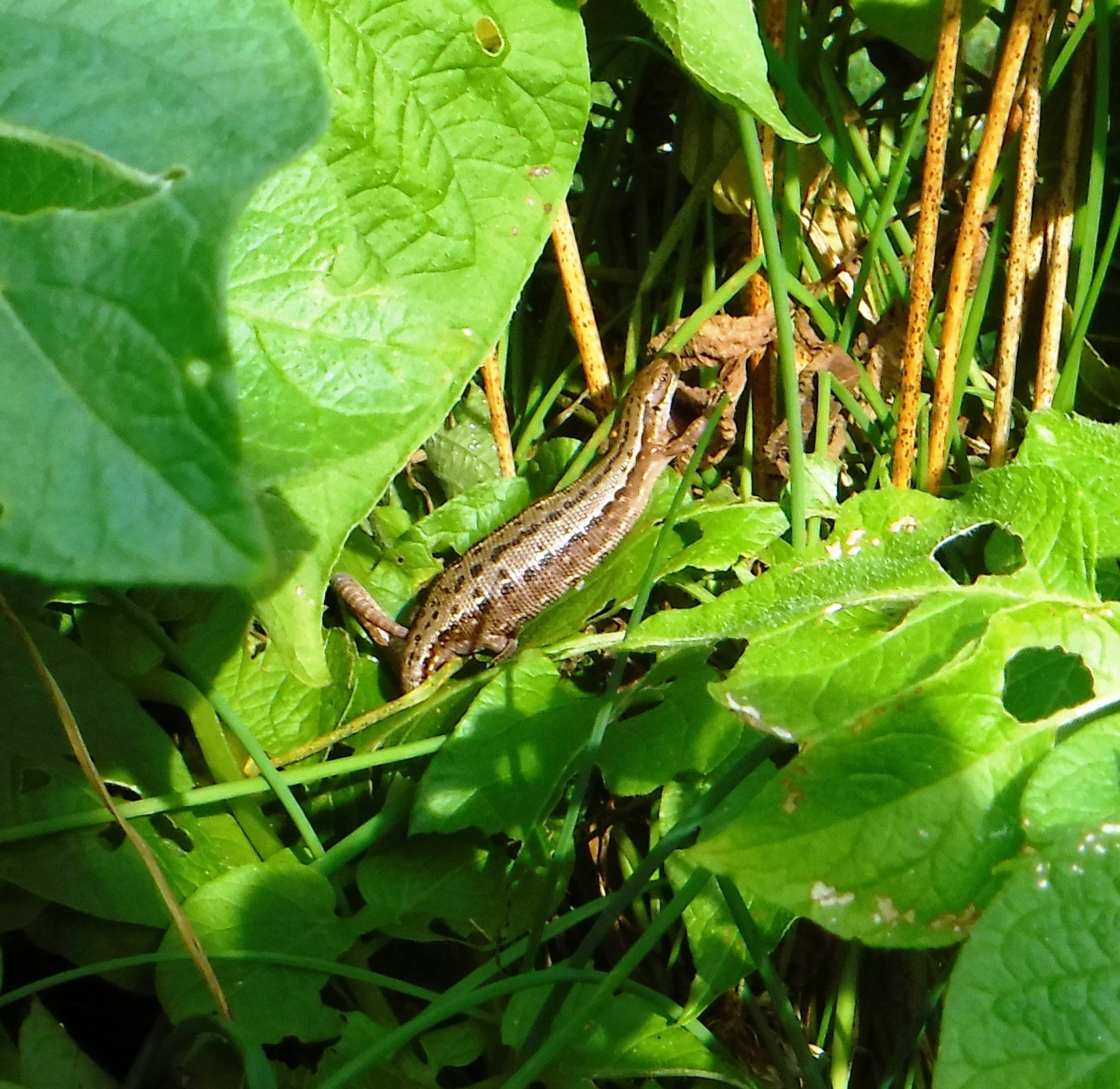
Total monthly rainfall: 36.5 millimetres. Maximum daily rainfall: 26 millimetres (20th July). Measurable rain fell on only six days of the month, resulting in a drop in pond-water levels to 40 centimetres below maximum. There were only 8 days when cloud-cover reached 100% during part of the day. Maximum temperature on the warmest day was 35°C on the 25th, and on the coldest day was 18°C on the 27th. Strong winds on the 30th-31st removed many small branches, twigs and green leaves from the trees.
Seven new wildflower species this month bring our total for the year to 61, starting with great willowherb on the 3rd, then ragwort on the 10th. On the 11th, the first fleabane blooms appeared, before stone parsley on the 12th. Water mint flowered by the lake on the 17th, and the invasive bristly ox-tongue on the 19th. Finally, on an end-of-month check, we discovered several red bartsia in well advanced flowering on the 31st.
-
 Common carpet moth
Common carpet moth
Common carpet moth
Common carpet moth
-
 Edge of wildflower meadow
Edge of wildflower meadow
Edge of wildflower meadow
Edge of wildflower meadow
-
 Pregnant common lizard
Pregnant common lizard
Pregnant common lizard
Pregnant common lizard
-
 Rosy footman moth
Rosy footman moth
Rosy footman moth
Rosy footman moth
https://www.kentfieldclub.org.uk/news/little-barton-farm-wildlife-notes/july-2019#sigProId6947046913
With 21 species of butterfly already seen before the month began, the silver washed fritillary on July 4th among woodland honeysuckle, and the purple hairstreak fluttering between the mid-tier leaves of an ash tree along the woodland edge on the 10th brought our tally to 23 species.
On the whole, it was a good month for moths, producing 11 species we could identify, some with the help of moth enthusiast, Keith Palmer. We saw six-spot burnet among grasses on the 7th, while on the 8th we found a large pale oak beauty on the trunk of an oak tree in the wood. A shaded broad bar nestled among vegetation in the woodland ride on the 11th, and on the following day (12th) a grass-veneer moth appeared on the roof-light window in our bathroom. On July 16th a blood-vein moth was found among lake-side vegetation, and on the 18th we spotted a yellow-tail moth on an elder bush near the back woodland pond. The warm days and nights encouraged four of the remaining five moths to light during the evening – these being a micro-moth Udea prunalis (23rd), common footman (24th), and common carpet moth (26th) to a lighted porch, and a copper underwing (25th) beside the stair roof-light window. The fifth was a rosy footman moth on the lawn beside a garden privet on the 26th. We now have 35 moth-species on record for the year so far.
Six species of dragonfly have been recorded here this month, bringing our species total to 17 for the present year. Common and ruddy darters emerged on the 1st - the common darter at the lake, and ruddy darter at the back woodland pond. On July 5th we found a brown hawker flying round the lake. On the 10th discovered what we believed to be a migrant hawker exuvia (larval skin) on a reed mace at our back pond. The hawker had emerged and left it behind before flying off. Later, when Gill Brook checked all the exuviae we had collected, she informed us that it was a Southern migrant hawker - a new species for us and a rare sighting for this part of Kent. An emerald damselfly appeared among lake-side rushes on the 11th, and a southern hawker patrolled around the front woodland pond on July 25th. We have yet to see the migrant hawker or the willow emerald.
We have three final records for the month. A pregnant common lizard posed among pond plants on 10th July. Gill Brook discovered a red-legged shield bug when she and John visited us on the 18th to return our exuviae, and our first ripe blackberries appeared on July 26th.

